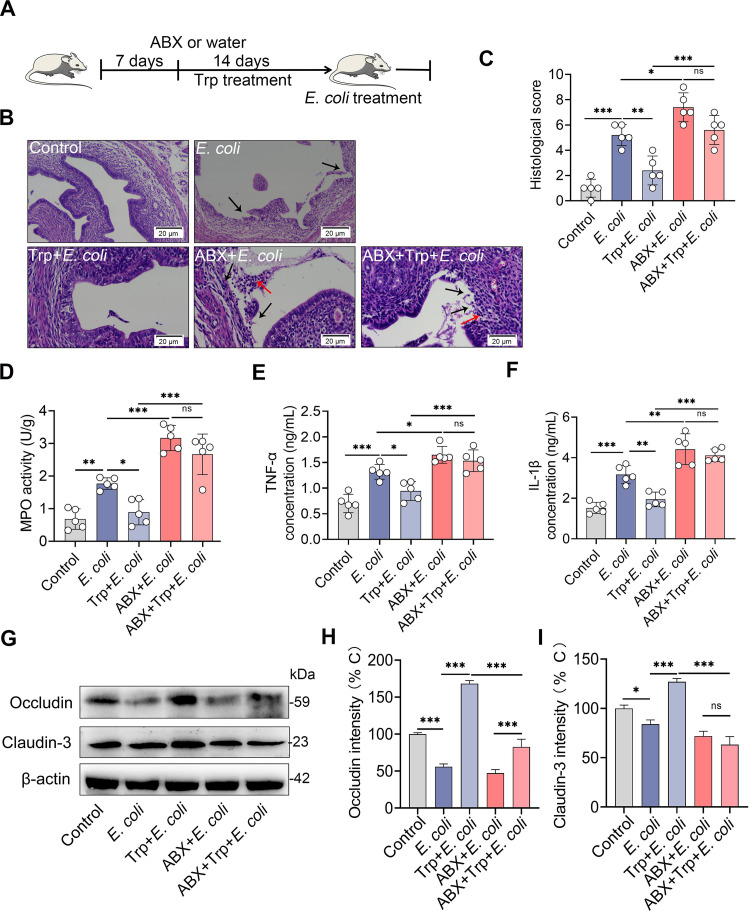FIG 5.
Dietary tryptophan intervention ameliorates E. coli-induced endometritis in mice in a microbiota-dependent manner. (A) Schematic representation of Trp intervention is shown. Mice were treated with ABX or water for 1 week, followed by Trp (1% added in diet) consumption for 14 days in the context with or without ABX treatment. The mice were next treated with E. coli (108 CFU/30 μL on each side of the uterus) to induce endometritis after anesthetizing by urethane (100 mg/kg) intraperitoneally. (B) Representative H&E-stained uterine sections are shown. The red arrow shows inflammatory changes and the black arrow shows endometrial damage (scale bar = 20 μm). (C-F) Histological score (C), MPO activity (D), and TNF-α (E) and IL-1β (F) levels from the indicated mice were determined (n = 5). (G) Levels of uterine occludin and claudin-3 protein in different treatment groups were assessed (n = 5). Intensity analysis of occludin (H) and claudin-3 (I) was performed based on Western blotting (n = 5). Data are expressed as the mean ± SD, and one-way ANOVA was performed for statistical analysis (C-F and H-I). *, P < 0.05; **, P < 0.01; and ***, P < 0.001 indicate significant differences. ABX, cocktail of antibiotics; Trp, tryptophan.

